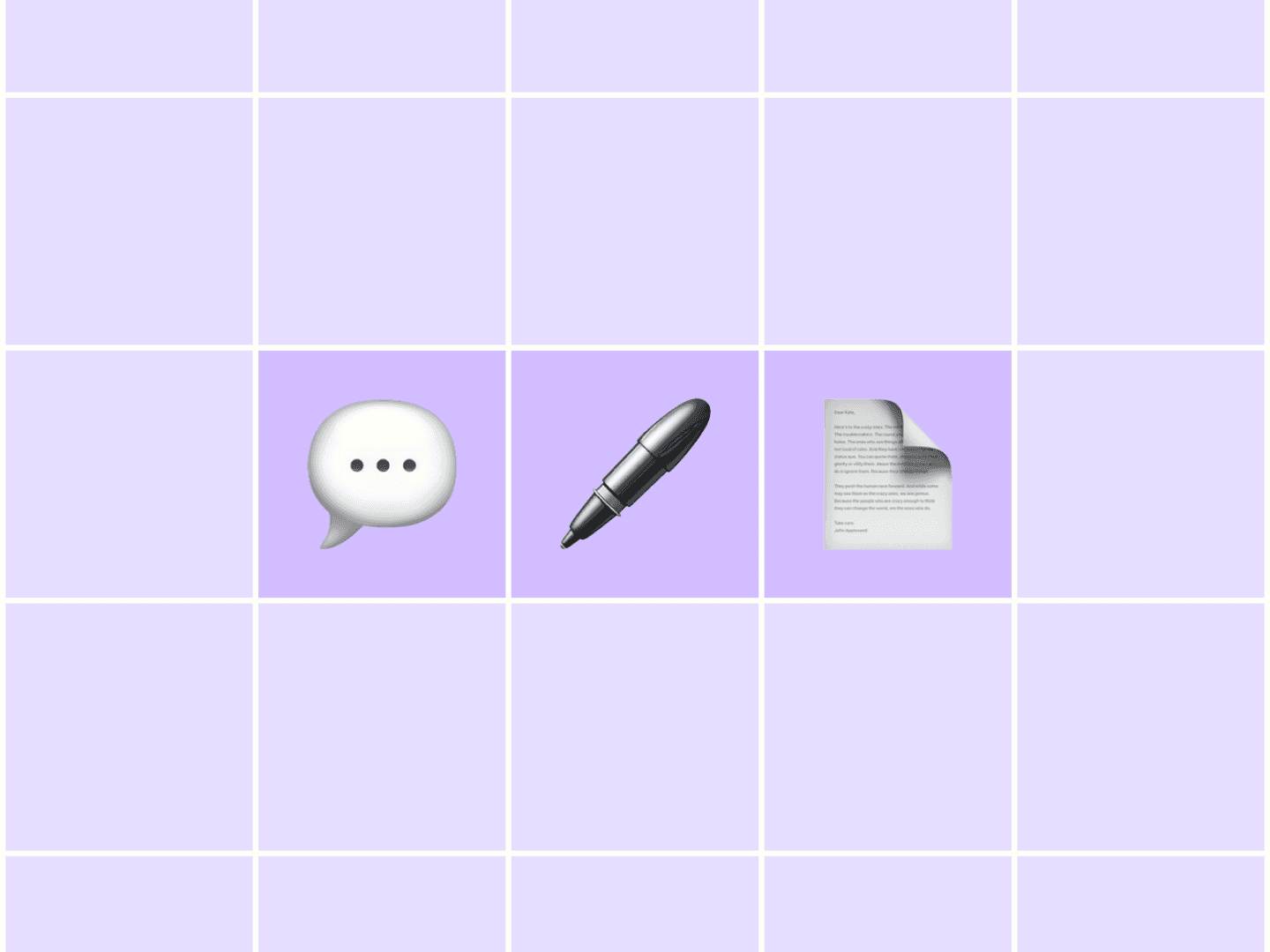At Buffer, we build with customers, not just for them. If you’ve seen my LinkedIn posts asking for quick chats, that’s why. Real conversations sharpen our product thinking, so whenever we start exploring a new idea, we talk to the people using Buffer every day.
As a product manager focused on how our users create content, these conversations are particularly helpful in understanding how users come up with ideas and where Buffer fits into their workflows.
As we explored improvements to Buffer’s content creation and scheduling experience, I spoke with 30+ users across industries and goals: solopreneurs, team managers, and creators growing personal brands. We wanted to understand how they plan, create, and publish, and where Buffer fits in that flow.
These conversations clarified our users’ needs and reminded us that behind every post is a person balancing creativity, consistency, and chaos. Below are the big themes we heard and how we’re using them to shape Buffer’s roadmap.
Many people still view Buffer just as a scheduling tool
Across interviews, one theme that came up again and again is that people love Buffer for its reliability and ease of scheduling. It’s what keeps them coming back, even as their social strategies evolve.
That’s great to hear, but it also reveals an opportunity. Scheduling is a strength of ours, but it’s just one piece of the puzzle. We’re working to evolve Buffer from a scheduling app into a true social workspace.
Imagine opening Buffer to brainstorm post ideas, collaborate with teammates, draft captions, plan campaigns, and review performance — all in one tab.
For many of the creators we spoke to, that kind of connected workflow is exactly what they’ve been piecing together manually using multiple apps. Our goal is to make that experience seamless within Buffer, and something we'll be working towards in the coming months.
Organizing content is harder than it should be
A recurring theme across nearly every conversation was content organization. Creators often have a mix of ideas, drafts, and scheduled posts, but finding what they need can take effort.
People told us things like:
- “Sometimes I can’t remember if I already published an Idea.”
- “I wish I could search all my content in one place.”
- "I thought I saved a draft, but I have no idea where it went."
We’ve felt this ourselves. We have added a lot of powerful features to Buffer over the years, but they don’t always feel as connected as they could be, and sometimes it can be hard to keep track of your content. We’re exploring ways to make organization smoother and reduce friction between related concepts like Ideas and Drafts.
Our vision is to make Buffer not only the single source of truth for your content, but one that’s easy to navigate, organize, and understand.

External tools are part of every workflow
For many users, there’s always another tool in the mix, like Notion, Trello, Canva, or even a simple Google Doc.
Many creators plan or brainstorm elsewhere, then bring content into Buffer to schedule. And honestly, that’s okay! The best creators build systems that work for them. Rather than trying to replace those tools, we see this as an opportunity to meet users where they already work, through better integrations and smarter import options.
That’s one of the reasons we’re investing in our public API. We want Buffer to sit at the intersection of the tools you use, helping you seamlessly connect to and share your content from wherever it resides.
Imagine being able to pull an idea from your Notion database straight into Buffer, or automatically import a design from Canva into a media library. The goal isn’t to trap your content inside Buffer; it’s to help it move more freely between the tools you love, and share with the world what you've made.
If you’re reading this and have an app, system, or workflow you’d love to connect to Buffer, we’d love to hear from you. These conversations are exactly how new ideas, and new integrations, begin.
Visual clarity wins over complex features
We’re currently working on updates to the look, feel, and flow of our composer. When we showed users early prototypes, one thing stood out immediately: simplicity and visual clarity matter more than complex functionality.
That doesn’t mean we’re abandoning advanced workflows or customization. But we’ve learned that power shouldn’t come at the cost of usability.
At Buffer, we’re committed to supporting individual creators and small businesses. Many of our users are just getting started with social media, and they rely on Buffer not only to post but also to learn what works. We don't want them to get lost in the nuance, but rather feel empowered to focus on what really matters: posting consistently, and connecting authentically with their audience.
Knowing this, we’re focused on making Buffer even more intuitive and visually cohesive. We've got some great updates on the horizon, and I'm excited for you to see them!
AI should support creativity, not replace it
We also asked users how they feel about AI in their content process. What we learned was fairly consistent across users: most aren’t looking for AI to write their posts. They want it to help with the process.
That resonates with how we're approaching and refining our use of AI in Buffer. We want it to be a creative assistant that helps refine your ideas, not replace your voice.
Think grammar and tone suggestions, platform-specific optimization, or performance insights, not robotic captions. We want you to find your own flow, create authentic and engaging content, and develop meaningful connections. AI can help you get there, but it shouldn't be the end result.
Where we’re headed
These insights aren't comprehensive of everything we've got planned at Buffer, but they're a glimpse into how we're thinking about certain aspects of the platform.
We want Buffer to be more than a social scheduling tool; we want it to be a social productivity tool. A space where you can brainstorm, organize, publish, analyze, and engage, all without friction.
We've got some exciting changes on the horizon, all in support of making Buffer the most intuitive, delightful, and connected social media tool out there.
And if you ever see me post on LinkedIn asking for a quick chat, now you know why.
Try Buffer for free
190,000+ creators, small businesses, and marketers use Buffer to grow their audiences every month.




